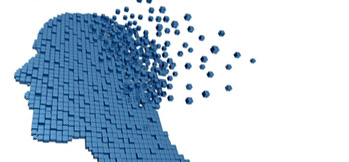Building Blocks
The brain is the most complex organ in our body. Even a toddler’s brain is far more sophisticated than a computer! Unlike a computer, however, which can only analyze information digitally, our brains have the ability to modulate our response to stimuli through neurohormones and certain neurotransmitters. Our brains have the ability to process spoken or written complete sentences in less than a second at the same time as we are processing other sensory information. A multi-tasking marvel, our brains process much information in parallel.
We have made considerable progress understanding the brain because there are scientists working at every level, from genes to synapses to neurons to brain structure to behavior. We have also made progress with evolutionary studies comparing both the similarities and differences in brains among humans and other animals. New research advances have aided understanding, ranging from informatics to rapid genetic analyses to multiple electrodes to modeling to noninvasive brain imaging. Finally, we have made advances in understanding neurodevelopmental disorders, brain injuries, and learning. All that said, because of the brain’s complexity and the complexity of human behavior, we still have a long way to go.
We remain limited in our understanding of complex behavior, of individual variation in brain and behavior, and of how to address neurodevelopmental disorders and brain injuries.The complexity of even the simplest brain circuit —— with multiple feedback loops and multiple connections —— makes it difficult to clearly assign a function to any specific region.
This section provides a basic understanding of brain and behavior. We start with the smallest building block, the neuron, then discuss how neurons convey information via synapses, discuss how they’re connected, describe overall brain structure, and end with a description of behavior.
Key Points
- Brains are composed of primary cells called neurons and supporting cells called glia.
- Neurons communicate using both electrical and chemical signals.
- Chemicals called neurotransmitters and neuropeptides vary according to brain circuits.
- The central nervous system includes the brain and spinal cord.
- Brains regions are specialized by function.
- Behaviors are influenced by both genes and environment.
Misconception
We only use 10% of our brains.
Once a brain circuit has formed, it cannot change.
Fact
We use most of our brain all the time.
Even adult brains can change their circuitry by learning through experience.
Read about other misconceptions.


